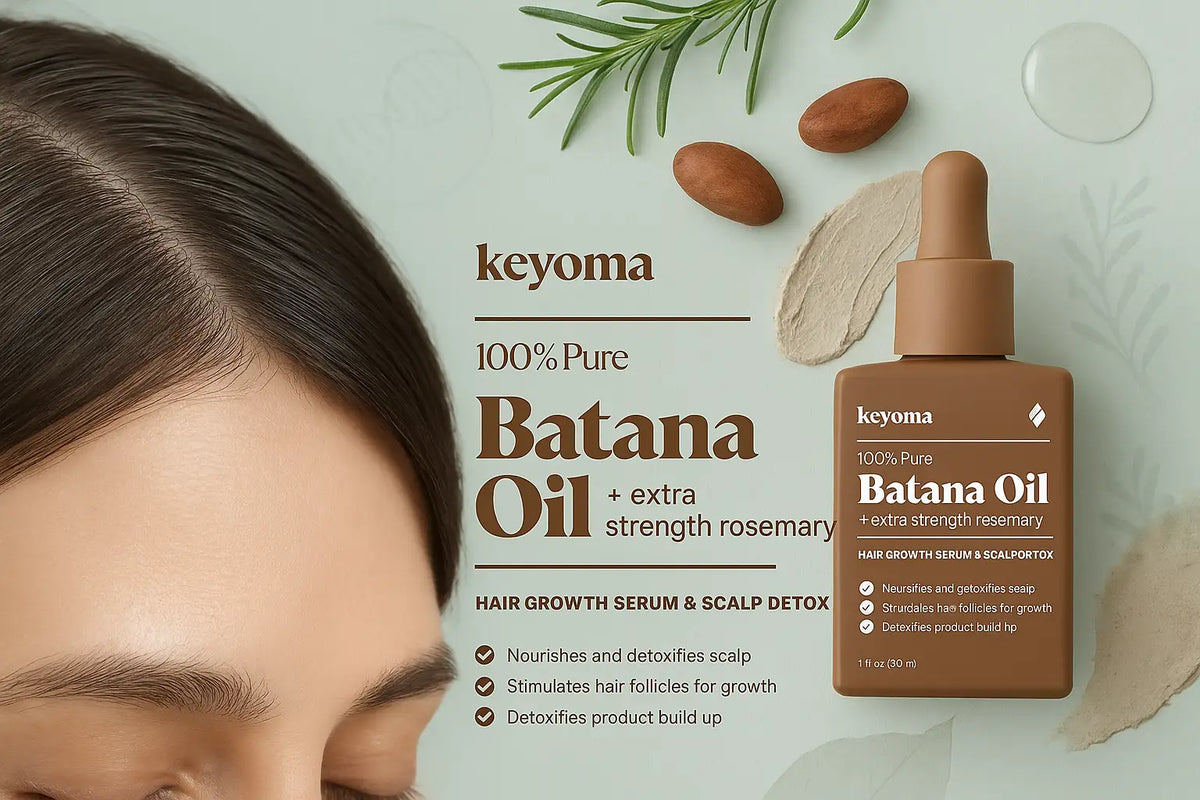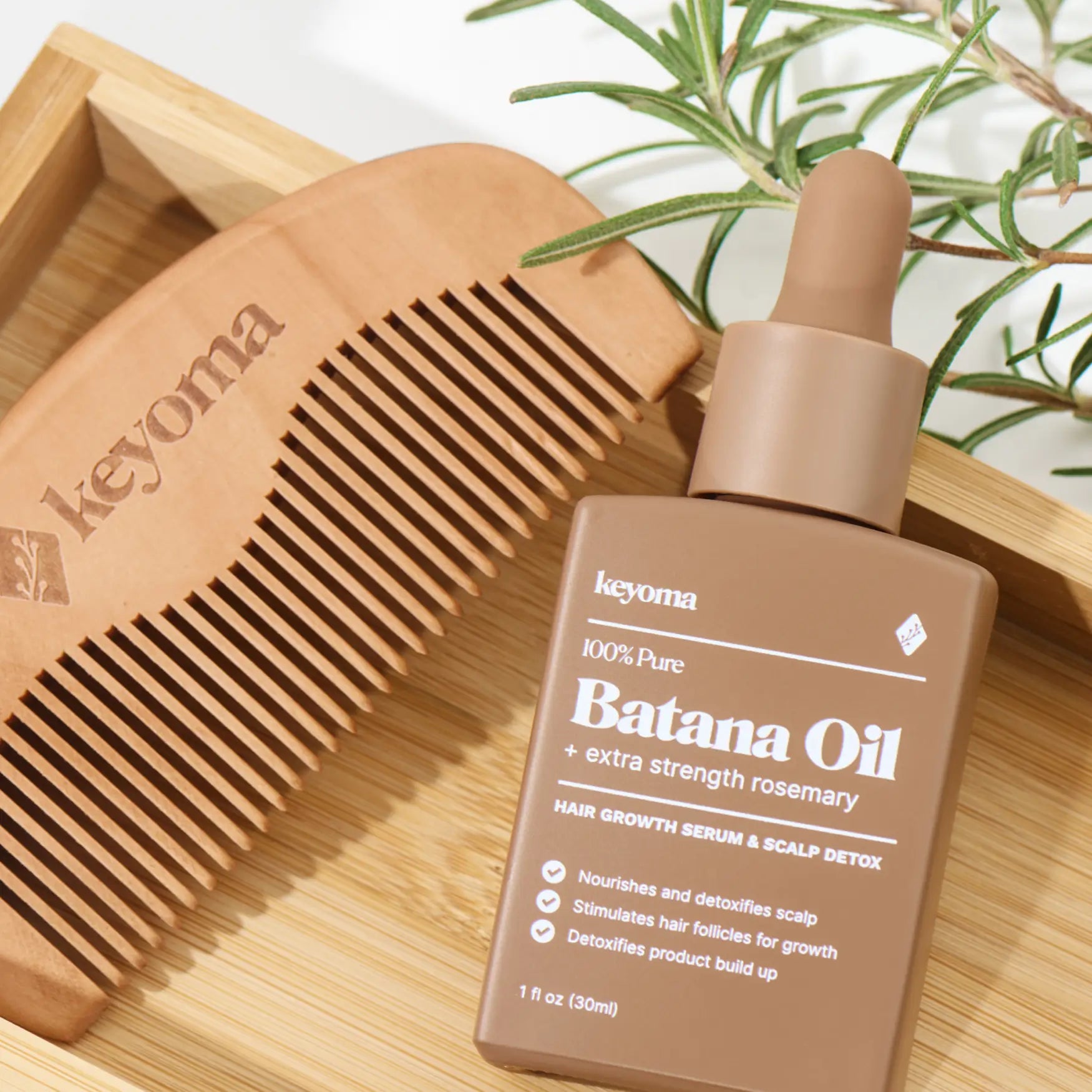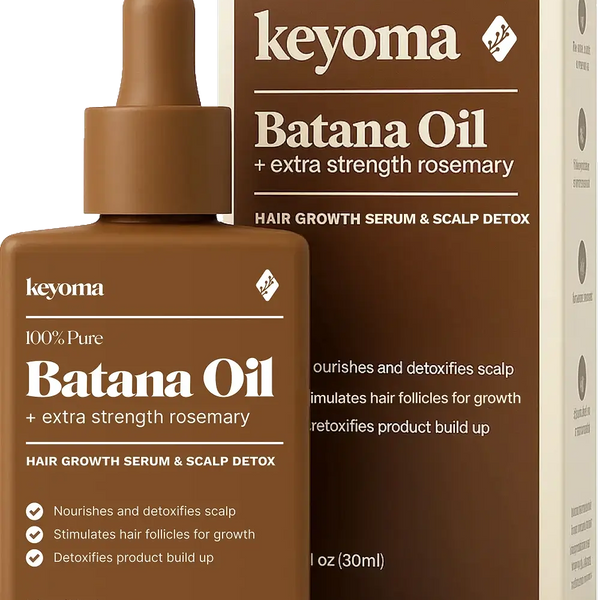Last updated
Aug 19, 2025
How to Detox Your Scalp Naturally: Remedies for Buildup, Itch, and Flakes
Published on
Aug 19, 2025

In this article
A tight, itchy, or flaky scalp usually means buildup. Product residue, excess oil, sweat, and dead skin can collect at the roots and keep your hair from looking and feeling its best.
Explore how to detox your scalp naturally with simple, dermatologist-informed home remedies. You will also see when to use a gentler option, how often to do it, and when it is time to see a professional.
Key Takeaways
-
DHT is a key driver of pattern hair loss in both men and women, and natural blockers aim to lower its impact on follicles.
-
Options with the strongest evidence include pumpkin seed oil, rosemary oil, saw palmetto, caffeine shampoos, and ketoconazole.
-
Foods like pumpkin seeds, green tea, soy, and peppers may support scalp health, though human studies remain limited.
-
Even natural remedies can cause side effects or interact with medications, so cautious and consistent use is important.
What Natural Scalp Detox Means
A natural scalp detox is a short routine that helps remove excess oil, dead skin, product film, hard-water minerals, and pollutants from the scalp surface. The goal is a clean base for healthier hair appearance and better comfort, not a medical cure.
Buildup happens to most people, especially if you use dry shampoo, hairspray, heavy conditioners, or if you exercise and sweat often. Mild flaking from dandruff is common and often tied to an overgrowth of Malassezia yeast plus skin sensitivity.
Dermatology groups recommend medicated shampoos for dandruff when needed, but gentle cleansing and occasional exfoliation can help with everyday buildup.
Your scalp has an acid mantle with a slightly acidic pH. Research shows lower-pH cleansers are kinder to hair fibers than alkaline ones. That is one reason many people like acidic rinses in a detox routine.
How to Detox Scalp Naturally Step by Step
For most hair types, a scalp detox once a week works well. If your scalp runs dry or your curls and coils need more moisture, start every other week instead.
1. Begin with a pre-cleanse massage on dry scalp. Use your fingertips to make small circles for two to three minutes to loosen buildup.
2. Daily scalp massage has even been linked to thicker strands in small studies, and honestly, it just feels relaxing. Results differ from person to person, but there’s some early science behind it.
3. Next, wash with a gentle, low-pH shampoo and focus on your scalp. Rinse thoroughly. Low-pH cleansers cause less friction and help protect the cuticle compared to alkaline ones.
Then, choose one detox add-on that suits your scalp that day:
-
Try a very diluted apple cider vinegar rinse if you want extra shine or to cut residue. Patch test first if you’re sensitive—ACV can irritate.
-
Use a cosmetic-grade clay mask if your scalp feels oily or you use a lot of styling products. Keep the contact time short.
-
Pick a tea tree oil shampoo if flakes and itch hint at mild dandruff. In one randomized trial, a 5% formula improved symptoms noticeably.
4. Finish by rinsing and conditioning only your mid-lengths and ends, not the scalp. Let your scalp breathe afterward—air-dry if you can or stick to low heat, and skip tight hats right after a detox.
Scalp Exfoliation Home Remedies Explained
What it does. Exfoliation helps lift dead skin and loosen scale. Dermatologists often recommend salicylic acid for scale-softening in medical scalp conditions. For everyday care you can try gentler, natural options first and add a medicated product if needed.
Two approaches:
-
Chemical style, gentle: Use a low-level beta hydroxy acid in a rinse-off scalp treatment. Salicylic acid is oil-soluble and can penetrate into pores. It is widely used to soften adherent scale. Keep contact time short and avoid irritated skin.
-
Physical style, sparing: A DIY scrub with superfine sugar blended into a light plant oil can help. Be kind to the skin. Scrubbing hard can worsen inflammation or psoriasis plaques. If you have an active condition, skip scrubs and use leave-on treatments or medicated shampoos instead.
Natural Scalp Detox Treatments at Home
You don’t need a complex routine to see results. These DIY recipes use everyday ingredients and focus on gentle, scalp-first care. Start with one method, keep your pressure light, and give your scalp time to respond.

Patch test new oils or blends, then adjust frequency based on how your skin and hair feel. If you want a plant-based option, batana oil with rosemary fits well here.
Batana Oil and Rosemary
Who it’s for: Dry, fragile, or thinning hair; scalps that prefer fragrance-light care.
Mix: 1–2 teaspoons pure batana oil, gently warmed. Optional: add 2–3 drops rosemary essential oil. If you’re scent-sensitive, use batana oil alone.
How to use: On a dry scalp, apply in sections. Massage for 2–3 minutes. Leave on 30–60 minutes or overnight under a cap. Shampoo thoroughly. Condition hair lengths only.
Frequency: 1–2 times weekly.
Caution: Store oils in a cool, dark place to limit oxidation.
Apple Cider Vinegar
Who it’s for: Normal, oily, or buildup-prone scalps without open sores.
Dilution: Start with 1 tablespoon ACV in 1 cup water. Increase to 2 tablespoons only if your scalp tolerates it. Keep contact time to 1–3 minutes, then rinse well. Evidence is limited and irritation is common, so keep it weak.
How to use: Shampoo first. Pour the diluted rinse over your scalp. Gently massage for 30 seconds. Rinse thoroughly. Condition hair lengths only.
Frequency: Every other week.
Skip if: Your scalp stings, you have an eczema or psoriasis flare, or you notice redness after use. Chemical burns from stronger vinegar have been reported.
Sugar and Oil
Who it’s for: Normal scalp without active dermatitis; helpful when flakes feel stubborn.
Mix: 1 teaspoon superfine sugar + 1 tablespoon light oil such as jojoba or grapeseed.
How to use: On a damp scalp, use the pads of your fingers and very light pressure for 30–60 seconds. Shampoo immediately.
Frequency: Every 2–4 weeks.
Caution: Scrubbing and scratching can aggravate conditions like psoriasis. If your scalp is inflamed, skip scrubs.
Clay Mask
Who it’s for: Oily scalp or heavy styling-product use.
Mix: 2 tablespoons cosmetic-grade bentonite or rhassoul clay + enough water or aloe juice to make a yogurt-like paste.
How to use: Apply to the scalp in sections with fingertips. Leave on up to 5 minutes. Do not let it fully dry on the scalp. Rinse well, then follow with a gentle shampoo.
Frequency: Every 2–4 weeks.
Safety: Use cosmetic-grade clay from a reputable brand to reduce heavy-metal risk. Never ingest clay.
Tea Tree Oil
Best evidence: Use a 5% tea tree oil shampoo as directed for 4 weeks.
DIY add-in: Add 10–20 drops tea tree oil to an 8-ounce bottle of unscented shampoo. Mix and use twice weekly. This creates a low dilution (under 1%) that is less likely to irritate, though it’s less studied.
Caution: Patch test first. Tea tree oil can cause allergic reactions, especially once oxidized. Store in a cool, dark place.
How Often to Detox Scalp Naturally
When to expect changes. With consistent cleansing and one add-on step, most people notice a cleaner feel and better root lift after the first session. If you are using a dandruff shampoo, many see improvement in 2 to 4 weeks. If there is no change, see a dermatologist.
-
Oily or heavy product use: weekly.
-
Dry, delicate, or curly/coily hair: every other week, or monthly.
-
Dandruff prone: use a proven dandruff shampoo 2 to 3 times weekly until controlled, and keep “detox” add-ons gentle.
Dermatologists recommend zinc pyrithione, selenium sulfide, ketoconazole, salicylic acid, sulfur, or coal tar for active control.
Scalp Detox Habits That Support Healthy Hair
You do not need a complex routine to see improvement. A few everyday moves can lower buildup, calm sensitivity, and keep your scalp balanced between detox days. Start with these practical tips and build from there based on how your scalp responds.

Massage More, Scratch Less
Gentle scalp massage not only feels good but can also support comfort and, in small studies, even help with hair thickness over time. Plenty of TikTok users swear it cuts down shedding on wash day. That’s anecdotal, of course, but it’s such a low-risk habit that it’s worth trying for yourself.
Pay Attention to Sweat and Water
If you exercise regularly, rinse or wash your roots soon after. When sweat lingers and mixes with leftover product, it can create buildup and even scalp odor.
Keep Balance in Mind
Daily detoxing is overkill and can strip your scalp’s natural defenses. A steady, minimal routine that respects your barrier usually works better than doing too much.
Stick with Clean, Straightforward Formulas
If you lean toward natural care, reach for plant-based oils and fragrance-free or fragrance-light products to lower the chance of irritation—for example, a simple, clean oil like Keyoma Pure Batana Oil with Rosemary. Remember that essential oils can oxidize and trigger more reactions as they age, so stash them in a cool, dark spot.
Support Hair and Scalp Health With Keyoma’s Natural Care
A scalp detox should feel simple, gentle, and targeted. You are clearing residue and easing itch, not treating a medical condition. Keep the focus on low-pH cleansing, light exfoliation, and a frequency that matches your scalp.
If flakes or irritation persist, use a proven dandruff shampoo and check in with a professional. Small, steady habits—thorough rinsing, mindful product use, and letting the scalp breathe—support comfort and healthier-looking roots over time.
Featured Product
100% Pure Batana Oil + Rosemary
Learn more about Batana Oil
Your Cart
Your Cart is empty
Let's fix that
You might like...
Search our store








